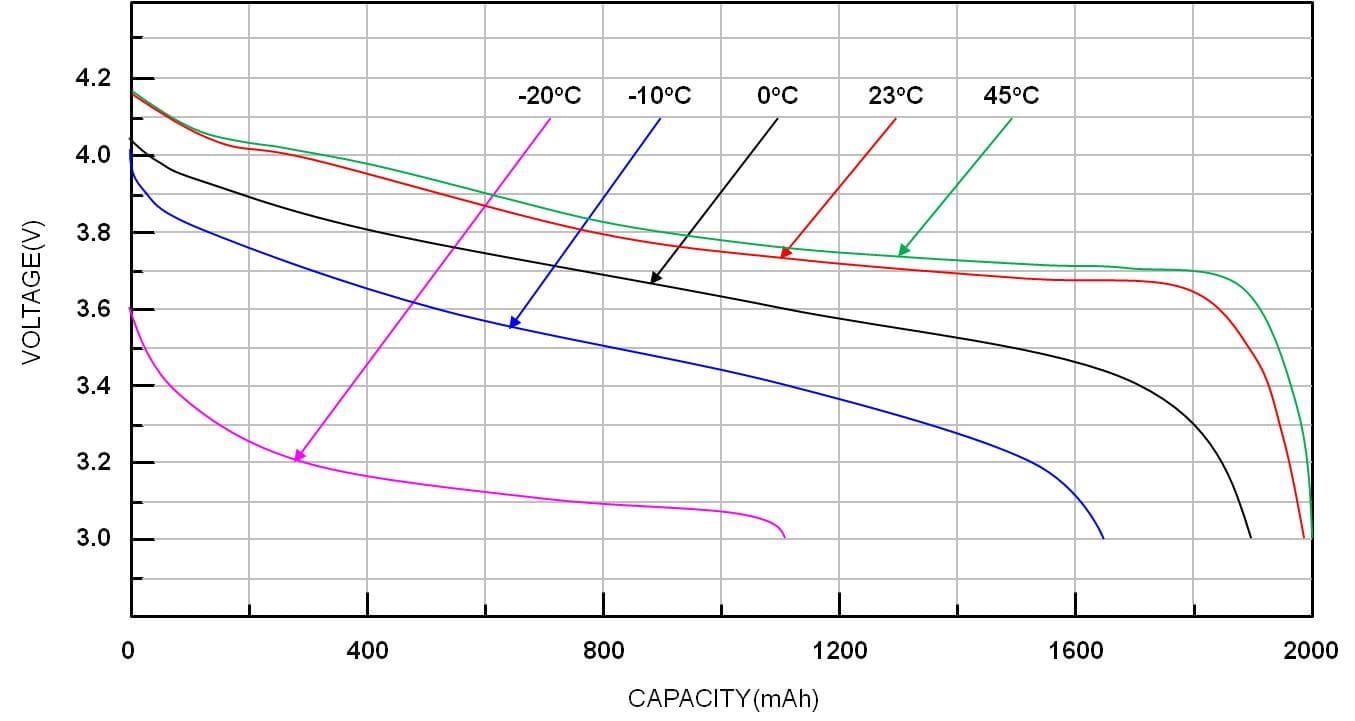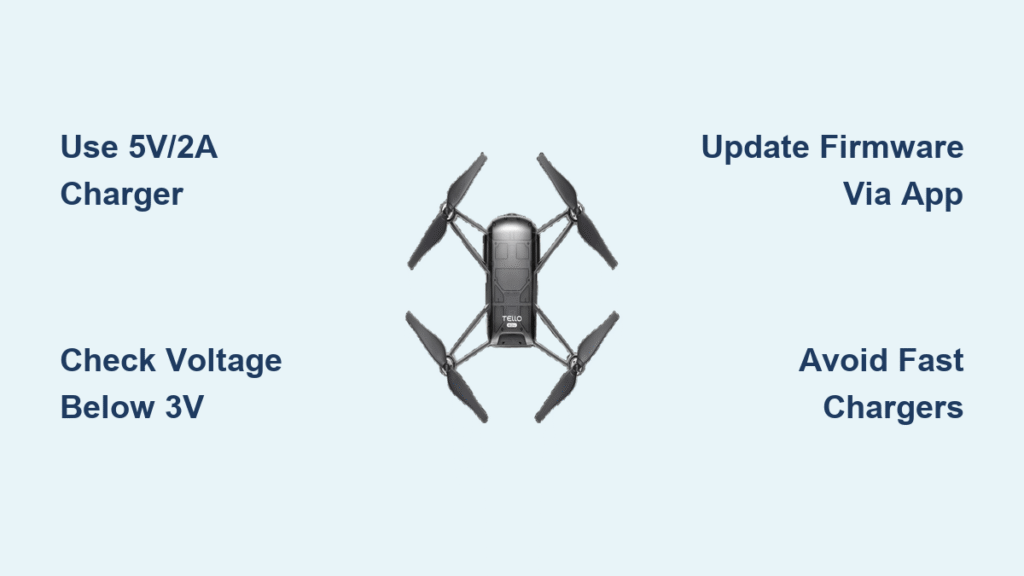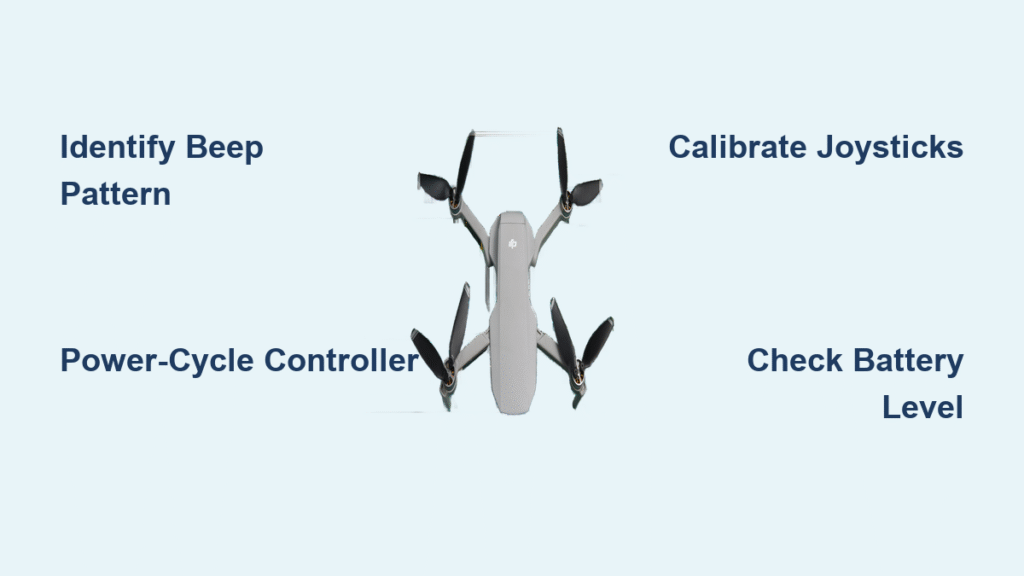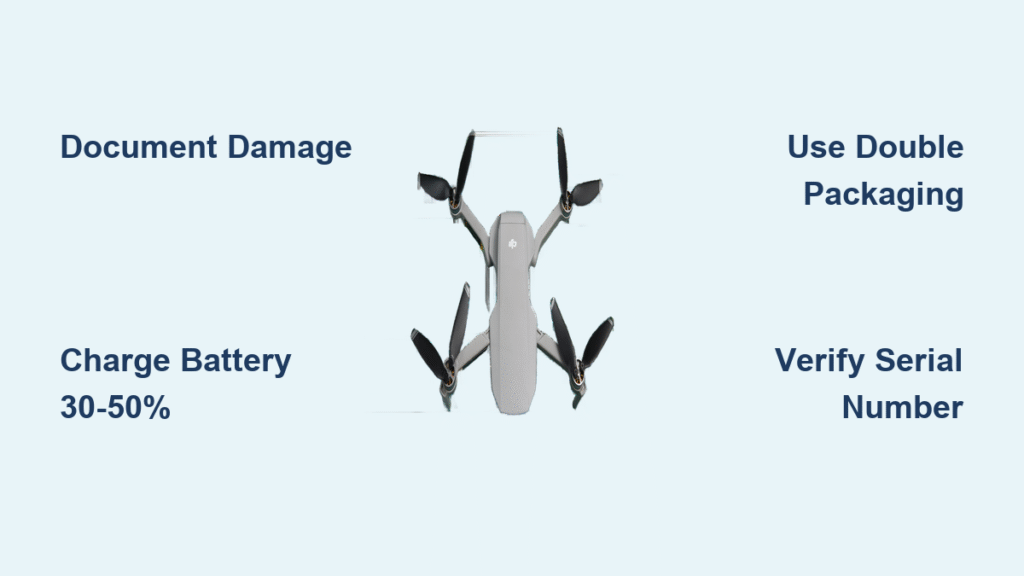Your DJI Tello drone sits lifeless on the desk, its LED stubbornly flashing red despite hours on the charger. You’ve tried your computer USB port, a phone charger, even the original power adapter—yet the battery remains dead. This exact scenario has stranded countless Tello owners, from teachers preparing classroom lessons to hobbyists eager for weekend flights. When your DJI Tello battery not charging crisis hits, panic sets in fast. But here’s the crucial truth: most charging failures stem from preventable issues like incorrect power supplies or firmware glitches—not dead batteries. This guide delivers battle-tested fixes from the Tello community, showing you exactly how to revive stubborn batteries and avoid future headaches.
Diagnose Your Tello Battery Charging Failure
Red LED Stays Solid During Charging
When your Tello battery LED remains solid red instead of flashing blue, the cell voltage has plummeted below 2.9V. This triggers the battery’s built-in low-voltage cutoff—a safety feature preventing damage from deep discharge. As classroom teacher Tim Tpribanich discovered after storing five drones for two years: “I plug in the batteries and all remain red… had them on overnight with no change.” This typically happens after long storage periods or repeated partial discharges without recharging.
No LED Response When Connected
Complete darkness when plugging in indicates either a fully depleted cell (below 2V) or circuit failure. New user Playakiin faced this after trying multiple chargers: “I plug it with the computer and never got charged, then I plug it with a charger of 5V 1 ampere and it didn’t get charged.” Always verify your power source first—many users mistakenly use 1A phone chargers when the Tello requires 2A minimum.
Slow Blue LED Flashing Without Charging
That deceptive slow blue flash suggests the charger recognizes the battery but can’t initiate charging. Pilot steven1105uk reported: “Slow flashing blue light when cable is plugged in and no light when cable unplugged.” This often means the cell voltage sits just above the critical 3V threshold but lacks enough power to complete charging. Don’t waste hours waiting—this symptom requires specific intervention.
Swollen Battery Emergency Signs
Physical swelling means immediate danger—stop all charging attempts. Playakiin’s first battery swelled after using a fast charger: “I charged it with a fast charger and my battery got swollen.” As Flydrone warns: “Never underestimate the danger… if it swells excessively it can catch fire at any moment.” Swelling indicates irreversible chemical damage from overcharging or voltage abuse.
Essential Charging Equipment Checklist

5V/2A Power Supply Requirements
The Tello demands precisely 5V at 2A minimum—common 1A phone chargers won’t cut it. Playakiin learned this the hard way: “The manual says the charger should be 5V 2 amperes or more… I waited 2 and a half hours, although the manual says 1.5 hours.” Higher amperage (like 4A) is safe since the drone regulates current draw, but insufficient power prevents charging entirely.
Original DJI Charger Advantages
Flydrone’s four-year experience proves why official chargers matter: “I have been using the DJI external charger for years and I have never had problems with swelling.” Generic chargers often lack proper voltage regulation, causing the swelling Playakiin encountered. The original charger cuts off precisely at 4.35V—the critical threshold for Tello’s lithium-polymer cells.
Multi-Battery Charging Solutions
For classrooms or frequent flyers, christiaan’s dual-charger method saves hours: “I charge the batteries with a fast charger first and when all LEDs green, then I put them into the regular charger.” This prevents the frustration Tim Tpribanich faced with inconsistent results in his three-slot charger where “1 battery red, 1 battery yellow… none are charged though.”
Voltage Testing Tools Setup
Grab a digital multimeter to diagnose problems. Flydrone specifies: “You can check the voltage directly from pin 1-3.” Daniel Wellborn asked how—simply touch the red probe to pin 1 (positive) and black to pin 3 (negative). Healthy batteries read 3.8V-4.35V; below 3.0V indicates deep discharge requiring revival steps.
Immediate Battery Revival Techniques
Tello Drone Charging Reset
Logicdon’s simple fix revived year-old batteries: “I briefly charged them in the drone one at a time… you get blue flashing. This seemed to kick them back to life.” Insert the battery, plug in the USB cable, and wait 30-60 seconds for the blue flash before removing. This “jump-start” often bypasses the external charger’s safety cutoff.
Firmware Update Recovery Method
Elalik’s Android-specific fix solved charging blocks for multiple users:
1. Install Tello app v1.1.1 (Android only)
2. Hold power button while connecting charger (no battery)
3. Insert battery while holding power button
4. Release when green LED turns off
5. Update firmware via app
McLovin confirmed: “This worked for me as well.” This resets communication errors that make the drone reject healthy batteries.
Voltage Jump-Start for Dead Cells
For batteries reading below 3.0V, AMJSOFT’s “shock” method can work—but with extreme caution: Connect a 12V source (+) to (+) and (-) to (-) for 60 seconds. Quaddamage warns: “If it’s damaged already… it may even go fireworks.” Only attempt this in a fireproof container with safety gear—swollen batteries require disposal, not revival.
Critical Battery Maintenance Protocols

Storage Voltage Best Practices
Never store batteries fully charged or depleted. Flydrone emphasizes: “The battery MUST be ‘stored’… kept ‘half charged’ at 3.80-3.85V when not in use.” Leaving batteries discharged (like Tim’s two-year storage) causes rapid voltage drop: “Self-discharges from 3V to 2V in less than a month,” explains quaddamage. Charge batteries the day before use, never weeks ahead.
Swelling Prevention Strategies
Avoid fast chargers not designed for Li-Po batteries. Flydrone states bluntly: “The battery swelled because it was badly charged.” Always use the DJI charger or a programmable Li-Po charger set to 4.35V max. Check batteries weekly for subtle puffing—Playakiin noticed “it looks that is starting to swell a little bit” before complete failure.
Safe Disposal Procedures
Discard swollen batteries immediately using Flydrone’s protocol: “Place in salt water for 24 hours to fully discharge, then take to electronics recycling.” Never throw in regular trash—“This causes fires in waste facilities.” Treat all swollen batteries as fire hazards requiring urgent disposal.
When Replacement Is Your Only Option

Irreversible Damage Indicators
Replace batteries showing these signs:
– Voltage below 2.0V (quaddamage: “All damaged cells had less than 2V”)
– Consistent charging failure after revival attempts
– Flight time under 5 minutes (steven1105uk: “forking out for a battery”)
– Visible case deformation
Quaddamage confirms: “If damaged already, you will see ‘battery error – landing’ messages or the battery turns off during flight.” At $15-$20 per battery, replacement is safer than risky revival attempts.
Bulk Battery Management for Classrooms
For educational settings, christiaan’s eight-battery rotation system prevents overuse: “I have 8 batteries, to charge all takes a lifetime.” Rotate usage so no single battery degrades prematurely. Replace entire sets annually—Flydrone notes classroom environments accelerate wear due to “intensive use patterns.”
Final Takeaway: Most DJI Tello battery not charging issues trace back to three culprits: insufficient 1A chargers, incorrect storage voltage, or outdated firmware. Start with the firmware update method using Android app v1.1.1, verify you’re using a 5V/2A+ power supply, and always store batteries at 3.85V. If your battery swells or reads below 2V, replace it immediately—never risk fire hazards. For classroom fleets, implement a strict rotation and storage protocol to avoid Tim Tpribanich’s nightmare of 15 dead drones. Remember quaddamage’s wisdom: “All Li-po batteries fail when left discharged.” By charging correctly and storing properly, your Tello batteries will deliver reliable flight time for years. When revival fails, replacement costs far less than fire damage repairs.




